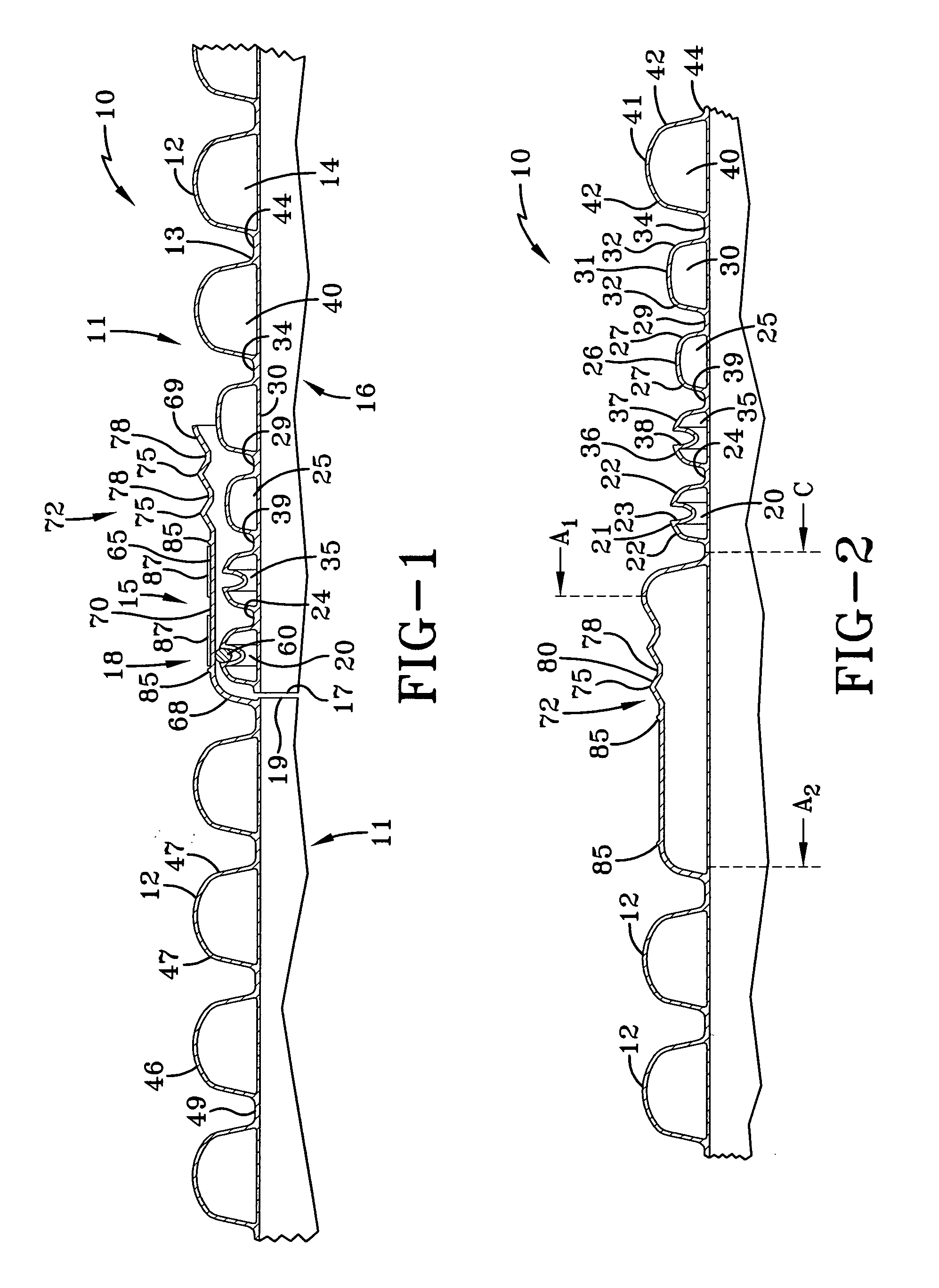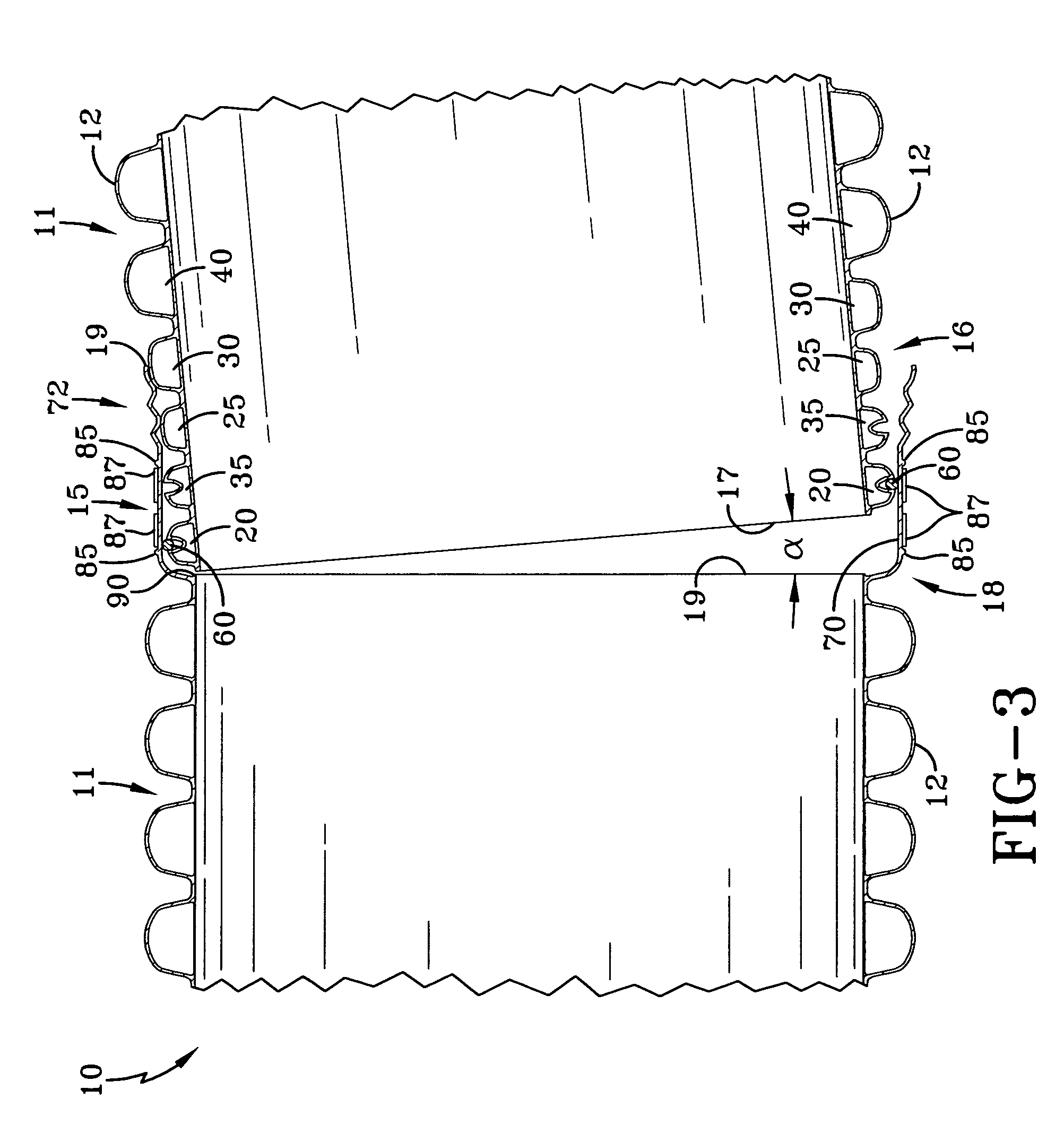In-line coupling pipe
a coupling pipe and pipe body technology, applied in the field of pipes, can solve the problems of increasing installation costs, requiring additional ground disturbance, and consuming a lot of time, and achieve the effect of effective sealing and convenient installation
- Summary
- Abstract
- Description
- Claims
- Application Information
AI Technical Summary
Benefits of technology
Problems solved by technology
Method used
Image
Examples
Embodiment Construction
[0025]Having reference to the drawings, attention is directed first to a comparison of FIG. 1 which discloses a corrugated pipe of indeterminate length and FIG. 2 which discloses the extruded product prior to being separated into the individual pipe sections 11 of the pipe designated generally by the numeral 10. The pipe sections 11 can be appreciated as having corrugations 12, with the pipe 10 having an outer wall 13 and an inner wall 14. The invention also features a coupler component 15 having a male portion 16 with a male portion engagement edge 17 and a female portion 18 with a female portion pipe edge 19. The pipe 10 is primarily fabricated from plastic, such as HDPE (high density polyethylene) or other extrudable plastics.
[0026]As can be appreciated from a comparison of FIGS. 1 and 2, the first corrugations 12 are formed having a crest or peak 46, a side wall 47 and a trough 44 directly adjacent the peaks of the first corrugations, with the side walls 47 connecting the first ...
PUM
 Login to View More
Login to View More Abstract
Description
Claims
Application Information
 Login to View More
Login to View More - R&D
- Intellectual Property
- Life Sciences
- Materials
- Tech Scout
- Unparalleled Data Quality
- Higher Quality Content
- 60% Fewer Hallucinations
Browse by: Latest US Patents, China's latest patents, Technical Efficacy Thesaurus, Application Domain, Technology Topic, Popular Technical Reports.
© 2025 PatSnap. All rights reserved.Legal|Privacy policy|Modern Slavery Act Transparency Statement|Sitemap|About US| Contact US: help@patsnap.com



